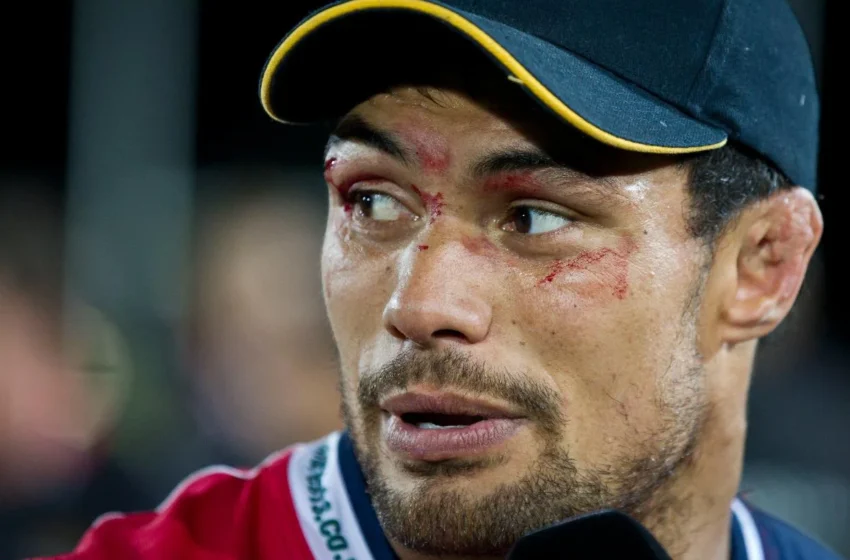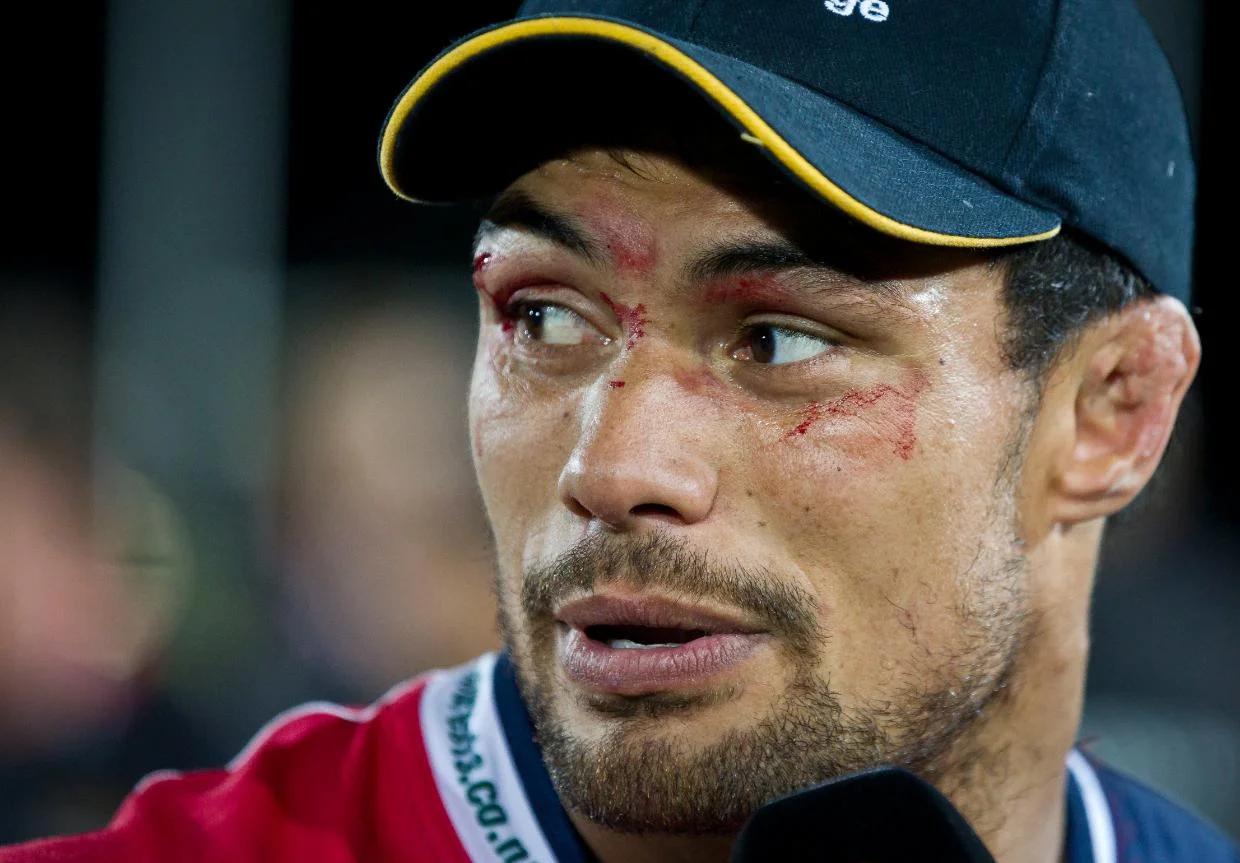Shane Christie’s concussion: the story of how it happened

Who is Shane Christie? A look at his career and legacy
Shane Christie, the former Māori All Black and Highlanders flanker, tragically passed away at the age of 39. While his death has drawn widespread grief, it has also brought renewed attention to the concussions he suffered during his playing career and the lasting impact of repeated head injuries in rugby.
On the field: repeated head impacts
Christie’s career at the top level of rugby involved intense physicality, particularly in his role as a flanker—a position known for frequent collisions, high tackles, and relentless involvement in rucks and mauls. During the 2016 Super Rugby season alone, Christie experienced three or four concussions in the space of just six weeks, forcing him to play matches while struggling with disorientation and memory gaps.
He described moments on the field where he felt like he was operating on “autopilot,” unable to recall specific plays or fully register what was happening around him. Each collision compounded the trauma to his brain, leading to cumulative symptoms including headaches, blurred vision, slowed reaction times, and difficulties with concentration.
The first injuries
Christie’s head injury issues began in his late teens, playing senior B rugby in Tākaka. Over the years, the cumulative effect of tackles, rucks, and collisions with other forwards took a toll on his brain, though at the time, the long-term consequences of repeated concussions were less widely recognised in New Zealand rugby.
Despite this, Christie maintained a high level of performance, captaining the Tasman Mako and earning 29 caps for the Highlanders, as well as eight caps for the Māori All Blacks. His courage and resilience on the field, however, came at a serious cost to his long-term health.
Read also: Who is Shane Christie? A look at his career and legacy
Playing through injury
Christie’s decision to continue playing after multiple concussions was partly influenced by the culture of rugby, where toughness and resilience are highly valued. He later reflected on this, noting the physical and mental strain of managing symptoms while maintaining coaching and playing responsibilities. He experienced memory lapses, mood swings, and speech difficulties—clear signs of the long-term effects of repeated head trauma.
Understanding CTE and Christie’s symptoms
Chronic Traumatic Encephalopathy (CTE) is a progressive degenerative brain disease linked to repeated blows to the head, most commonly seen in contact sports such as rugby, American football, and boxing. CTE cannot be diagnosed in living individuals; it is identified posthumously through brain tissue analysis. Symptoms can include persistent headaches, memory loss, mood swings, depression, difficulty concentrating, and impaired judgement.
Christie’s experiences closely mirrored these symptoms. Following his retirement in 2017, he reported ongoing headaches, cognitive difficulties, vision and speech problems, and significant emotional challenges. These are all consistent with the clinical signs of CTE observed in athletes who have suffered repeated concussions over time. His proactive decision to donate his brain to the New Zealand Sports Human Brain Bank demonstrates his commitment to advancing understanding of the disease and protecting future players.
From player to advocate
After retiring, Christie became an outspoken advocate for concussion awareness. The 2023 death of his former Tasman team-mate Billy Guyton, later confirmed to have been suffering from CTE, struck Christie deeply. He spoke at Guyton’s funeral and soon after helped establish the Billy Guyton Foundation in Nelson, pushing for more research and transparency around head injuries in rugby.
Impact on New Zealand rugby
Christie’s story highlights the physical risks faced by professional rugby players and the importance of early intervention and proper concussion management. His experiences sparked conversations within the rugby community about player welfare, long-term brain health, and the need to reassess how head injuries are identified and treated on the field.
New Zealand Rugby paid tribute to Christie, noting that “any time the rugby community loses a member it is felt deeply. Shane’s passion for the game will be remembered always. Our thoughts are with his whānau, friends, and community.”
Legacy beyond the pitch
Shane Christie will be remembered not only as a talented player and leader but also as a courageous advocate for the health and safety of future generations. His openness about the concussions he suffered and the struggles he faced serves as a powerful reminder of the hidden costs of professional sport, and the importance of prioritising player wellbeing above all else.
Moe mai rā, Shane Christie.


